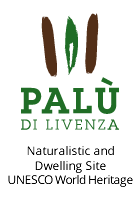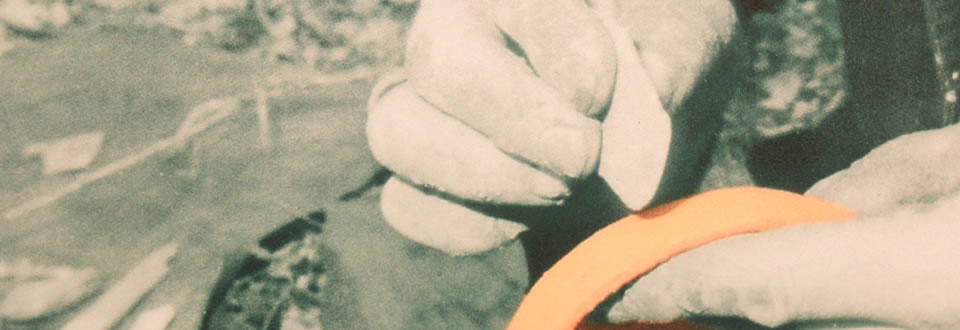Pottery and chipped stone
The manufacture of vessels is a practice used by prehistoric farmers, but we must not forget that the ceramic was just one of the many materials used to make containers in the past.
However, the variety of the forms of the vessels and the long duration of this material make the ceramic very suitable for purposes of classification and comparisons in the study of prehistoric societies.
The pottery fragments collected in Palù di Livenza are very numerous. It is a coarse pottery, with shapes fairly simple (jars, dishes, plates, bowls and containers with “square mouth”) and rich in minerals. The most common decorations, found usually on the lips or on the neck of vases, are printed by hand or with tools. The engraved decorations are rare, while we have examples of plastic decorations such as bosses, cords with loops and digital impressions.

Overall, the ceramic is simple, not very elaborate in the forms and decoration. We note, however, elements derived from different cultural traditions. Comparisons of the ceramic materials refer to the culture of Square Mouth Vases in its most recent elements and to the culture of Lagozza. One other component, which refers to the Copper Age, refers instead to the stilts of the swamp of Ljubljana in Slovenia.
Among the objects of pottery we have some “pintaderas” having one or more surfaces decorated with geometric motifs in relief. The term, taken from the Portuguese, suggests that these were molds used for the application of paint on the body or the decoration of fabrics.
These objects are common in the Neolithic cultures of the Balkans and Central Europe, while in northern Italy they appear as part of the second phase of the culture of Square Mouth Vases. Few, but still attested, are whorls made of pottery, objects used as weights during the spinning of the wool.

Another very important part of the material culture of a Neolithic village are chipped and smoothed stone tools.
The nodule of flint, after proper preparation, was used to get splinters or knives, transformed by tweaking the edges in instruments identified with names suggested by their hypothesized function ( chisels, scraperss, knives, arrowheads, etc. ). The rock used for chipped stone tools was the flint that is well suited to this type of work. These artifacts are very numerous.
The flint used in Palù came largely from the Venetian region and, in particular, from the area of Monti Lessini near Verona, but it was also used local flint collected in the alluvial deposits of the surrounding plains.
As in the case of ceramics, the types of flint tools provides information on cultural traditions of Palu di Livenza: a most significant component is relevant to the culture of Square Mouth Vases, while the other, less consistent, but recognizable, refers to the culture of Lagozza. Other sporadic objects are related to other cultural traditions of the late Neolithic, Eneolithic and Bronze Age.

One of the objects that best characterize the Neolithic is the ax made of polished stone. Axes required a different preparation than the chipped stone tools, as well as more hard and compact raw materials.
The few polished stone objects collected in Palù are obtained from green stones, that are the raw material most widely worked during the Neolithic period to achieve the cutting tools (axes, hatchets and chisels), and whose only sources of supply are located in northern Italy, in central Liguria and in various areas of Piemonte. The stone ax blades were inserted in wooden handles of which a fragment of beech wood is preserved at Palù di Livenza.

« Privacy Dove dormire »



